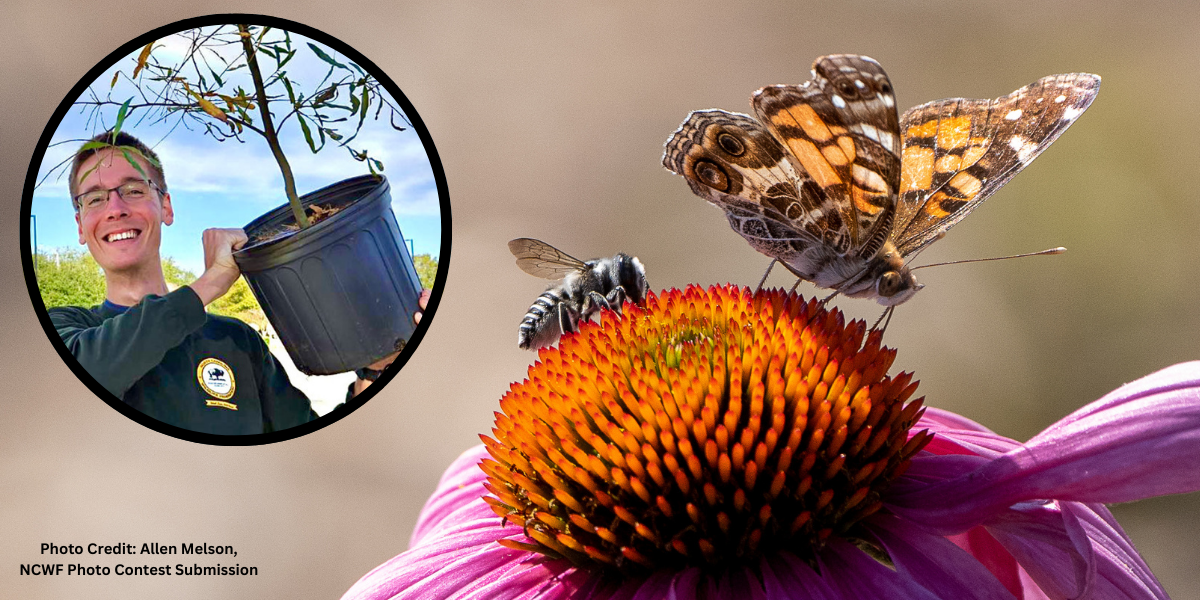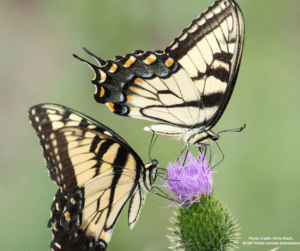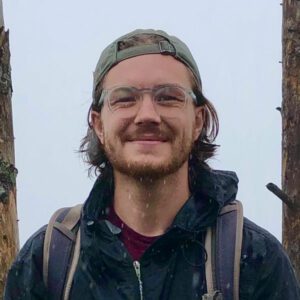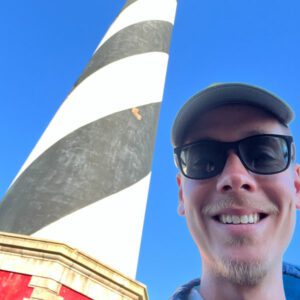Over 3 Thousand Sites and Counting – NC Pollinators, Communities, and Habitats along the Butterfly Highway

Why is creating a pollinator habitat on your property so important?
 North Carolina is a state blessed with high biodiversity – from bugling elk in the Great Smoky Mountains to oystercatchers along the Coast.
North Carolina is a state blessed with high biodiversity – from bugling elk in the Great Smoky Mountains to oystercatchers along the Coast.
However, this natural abundance presents challenges. Wildlife is not only present in remote, untouched areas within the state but also navigates within our urban landscapes. Wildlife coexisting alongside humans in urban areas brings numerous hazards for wildlife, including constant traffic, scarcity of resources, and degraded habitats due to pollution and fragmentation. This reality is especially pertinent for pollinators, which traverse both urban and rural settings in search of food and shelter, facing risks such as chemical exposure, invasive plant species, nesting limitations, and barriers to flight such as vehicles and structures.
But it doesn’t have to be this way.
One way that NCWF tackles this problem is through the Butterfly Highway program, which establishes pollinator habitats in rural, suburban, and urban areas alike.
A Pollinator Habitat Interview with Conservation Coordinator Luke Bennett
Throughout March, NCWF is ushering in the colorful spring season by honoring March for Pollinators.
The state’s Wildlife Action Plan, crafted by the North Carolina Wildlife Resources Commission (NCWRC) and partners, identifies numerous pollinator species in need of conservation efforts. These species offer an invaluable pollinating service to a wide range of native plant species throughout the state, including those that mitigate erosion, provide shelter for wildlife, secure our food supply, moderate climate, and more.
We sat down with Conservation Coordinator and Butterfly Highway coordinator Luke Bennett to ask some questions about the status of pollinators in North Carolina, what can be done to help them, and how NCWF’s Butterfly Highway directly meets those needs.
How does the Butterfly Highway program – and pollinator projects, in general – benefit urban/suburban habitats? Why are urban/suburban pollinator projects important?
A. In an age where development is becoming more and more frequent, it’s crucial that we find innovative ways to provide habitat for pollinators in an urban/suburban setting. Pollinators are experiencing a high amount of pressure as urbanization spreads far and wide. A simple backyard garden can be a critical haven for pollinators in an urban/suburban setting. However, it can be daunting to stare at your green lawn and wonder where to start? The Butterfly Highway program provides that first step and gives people the tools they need to create habitat for pollinators. It simultaneously spreads the word on a grassroots level about the importance of creating pollinator habitat.
In an era of rapid development and urbanization, many wildlife species – including pollinators – are displaced. How long does it take wildlife to return to these areas, and what can be done to encourage the return of these species?
A. It takes time for wildlife to repopulate an area but the saying “plant it and they will come” holds true. I often encourage folks to be patient and avoid becoming discouraged. One person emailed me last year to say that after 5 years of not seeing hardly any pollinators on her property, she finally experienced her effort pay off with a huge rush of butterflies and bees last spring. Simply put, making your site more attractive to pollinators will speed up the process and offer a higher chance of success. Which means dedicating as much space as possible to quality pollinator habitat.
What are some of the largest projects that have been undertaken by the Butterfly Highway program?
A. NCWF chapters have been amazing supporters of the Butterfly Highway program. One of our chapters garden for pollinators initiative stands out in my mind. The chapter has installed pollinator gardens all over their community at schools, places of worship, public parks, preserves, you name it! It’s not so much one project as it is a collective of projects going on across the state through NCWF’s chapter network. And when the chapters aren’t installing pollinator habitat themselves, they’re often encouraging their local community to take action and install their own pollinator habitat. It’s a grassroots effort that has taken root in many communities across the state.
How do Butterfly Highway projects benefit not only native pollinators, but the communities in which these projects take place?
A. Great question. The program is not confined to people’s backyards. Many of the Butterfly Highway sites are out in the community whether that be at a school, a place of worship, a park or preserve, etc. These Butterfly Highway sites not only serve pollinators but also the people who live in the community. The sites serve as excellent educational tools for the public to learn about pollinators and native plants. Oftentimes these sites offer an opportunity to engage volunteers in the community to get outside and help maintain these sites. Plus, it’s a unique way to feel connected with your neighbors. One example sticks out where a person in Charlotte created a pollinator garden in her front yard and installed a sign after the work was done. Next thing you know people are strolling by and asking her about the Butterfly Highway program and how they can get involved. Today there’s over 10 registered Butterfly Highway sites on the same street!
For those who have already registered their yard as a Pollinator Pitstop, but want to keep turning their yard into a safe and healthy place for pollinators… what more can be done?
A. Fortunately an NCWF blog was recently posted to help folks continue to enhance their property for pollinators! There is always something else to do! Remove invasive species, plant native plants, provide water on your site, leave those leaves, install nesting boxes, minimize pesticide use, implement a composting system and on and on and on.
What if I don’t own any property, but share space through my neighborhood/community/school, etc?
A. The Butterfly Highway program is unique in that it does not limit folks in terms of where they can install pollinator habitat. Granted that you have permission, the Butterfly Highway tools can be applied anywhere there’s an opportunity. Schools, parks, etc are often thrilled at the idea of creating pollinator habitat. We now have over three thousand registered Butterfly Highway sites from not only private landowners but also from folks who have taken the initiative to find places and spaces in their community with a need.
How large does a Butterfly Highway Pollinator Pitstop need to be? Can I certify my apartment window box?
A. The Butterfly Highway program is all about creating pollinator habitat, whether that be a small container garden outside your apartment windowsill or a large 100+ acre meadow. We understand not everyone has access to large swaths of land to convert to pollinator habitat. Do what you can!
I’ve been on staff for about two years now at NCWF and the Butterfly Highway program has been a real source of optimism and inspiration. It’s humbling to receive emails from people across the state who are so excited about the habitat they’ve created for pollinators at their home or in their community. The momentum to create habitat for pollinators and wildlife as a whole is evident. At NCWF, we’re poised and ready to give that momentum the food and water it needs to grow and expand across the state. Oh and last thing… please sign up for the Butterfly Highway newsletter!
Written by:

– Bates Whitaker, NCWF Communications & Marketing Manager

– Luke Bennett, NCWF Conservation Coordinator
